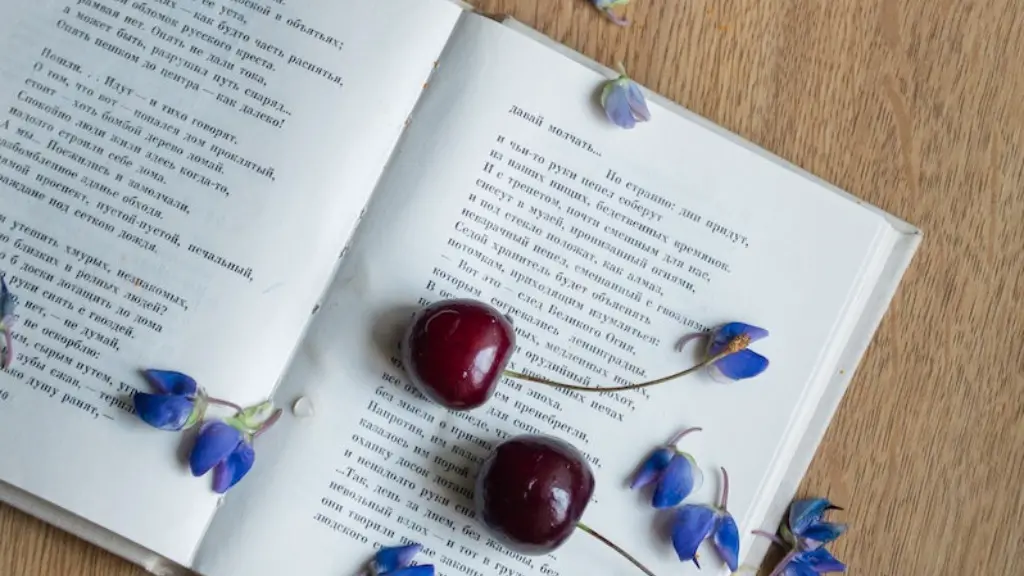Sonnets are among the most popular forms of poetry in the world. They are a type of lyrical poem that has been around since the Middle Ages, and their popularity has continued to this day. Sonnets have been used to express love, sorrow, joy, and all other human emotions. But what is a sonnet exactly?
A sonnet is a poem that has 14 lines and is divided into two parts; the octave and the sestet. The octave has eight lines and sets up the theme of the poem. The sestet has six lines and is used to develop and elaborate on the theme. Traditional sonnets are written in iambic pentameter, meaning that each line has 10 syllables and a regular rhythm. The most recognizable form is the Shakespearean sonnet, which has three quatrains (four lines each) and a couplet (two rhyming lines).
To understand what a sonnet is, it is important to look at its structure, since the structure is an integral part of the genre. A good sonnet should be easy to read and follow, while still conveying a clear and powerful message. Each line should flow effortlessly into the next, creating a lyrical effect. Sonnets usually have a specific rhyme scheme, although there are variations depending on which style of sonnet the poet is writing.
The unique structure of sonnets also serves a purpose. They have the ability to contain many themes and ideas in a short space. By using images, metaphors, and other literary devices, poets can express their emotions in a way that is both concise and powerful. This ability to compress an idea into a few lines has made sonnets a popular form of expression throughout the centuries.
Sonnets can also be used to explore complex concepts. By expressing an idea in 14 lines, poets can present it in a new and interesting way that would not be possible with a longer poem. This also allows for a deeper analysis of the concept, as the poet is not restricted by the constraints of time or space. Sonnets also offer the poet more variety when it comes to expression, as they can choose to either emphasize certain elements of the poem or omit them completely.
Ultimately, what makes a sonnet so compelling is its ability to express a lot of emotion and meaning with just a few words. They are powerful tools for conveying emotions, ideas, and feelings, and have been used by poets for hundreds of years. They can also be used to explore complex issues, as the structure of a sonnet allows for a deeper level of analysis and expression. Sonnets are an important part of poetry and, when done correctly, can be incredibly beautiful and powerful.
What is the rhyme scheme of a sonnet?
The rhyme scheme of a sonnet is usually divided into two parts; the octave and the sestet. The octave has eight lines and typically follows an ‘ababcdcd’ rhyme scheme. This means that the first and third lines rhyme, as do the fourth and sixth lines. The sestet has six lines and follows a ‘efgfef’ rhyme scheme. This means that the eighth, tenth, and twelfth lines rhyme, as do the ninth and eleventh lines.
Who invented sonnet?
The origins of the sonnet are unclear, however, there is some evidence to suggest that it was initially created by Sicilian poets in the 12th century. These early sonnets followed an Italian rhyme scheme of ‘abbaabba cdecde’, which later evolved into the more common ‘ababcdcd’ format. It is believed that the sonnet was popularized in England by the poet Geoffrey Chaucer in the 14th century, although it was not until the 16th century that it became a well-known poetic form.
What poetic devices are used in sonnets?
Sonnets are known for their use of poetic devices such as imagery, alliteration, and metaphor. Poets use these devices to express the emotions and ideas they are trying to convey in their sonnets. For example, metaphor is a powerful tool that can be used to paint vivid pictures in the readers’ minds. Alliteration is also often used to give sonnets a lyrical quality, making them easier to read and remember.
What is the purpose of a sonnet?
The purpose of a sonnet is to express emotion, feelings, and ideas in a creative and powerful way. Sonnets have the ability to capture a certain mood or emotion and express it in a short and concise way. They are also a great way for poets to explore complex ideas and concepts, as the structure of a sonnet allows for a deeper level of analysis and expression. Sonnets can also be used as a form of storytelling, as they can convey a powerful story in just a few words.
What is the difference between a sonnet and a lyric poem?
The main difference between a sonnet and a lyric poem is that a sonnet typically has a specific rhyme scheme and structure, while a lyric poem typically does not. A sonnet is usually composed of 14 lines and follows a strict structure, whereas a lyric poem can be composed of any number of lines and does not have a fixed structure. Additionally, a lyric poem does not necessarily have to have a rhyme scheme, whereas a sonnet typically does.


